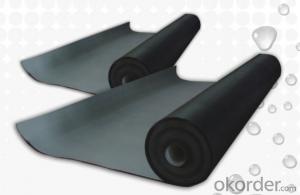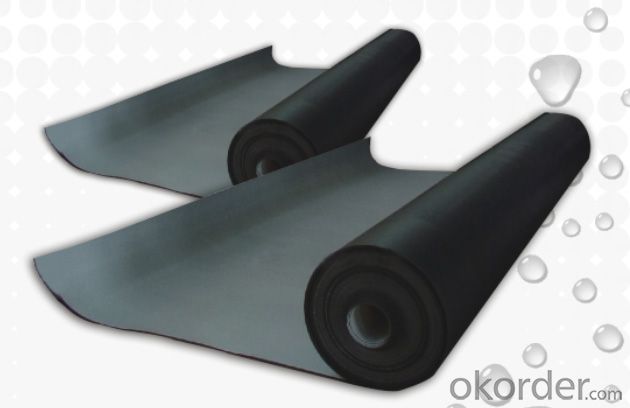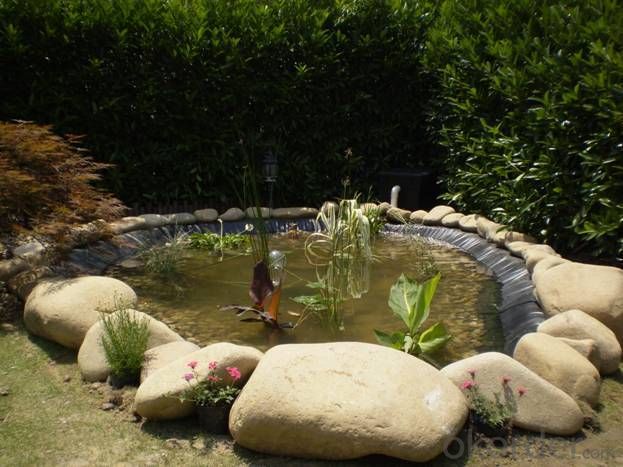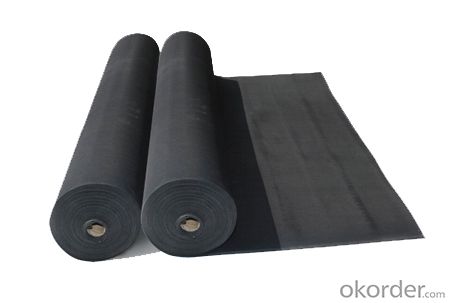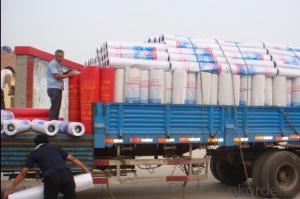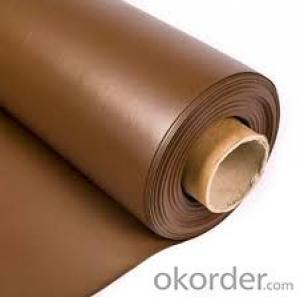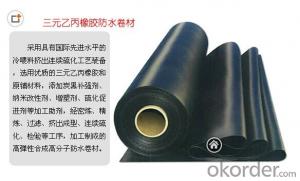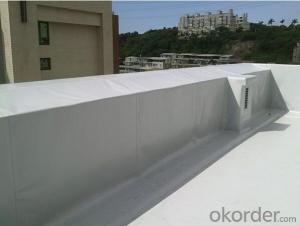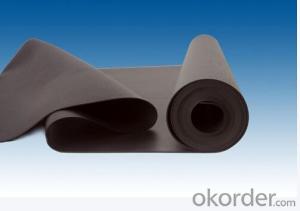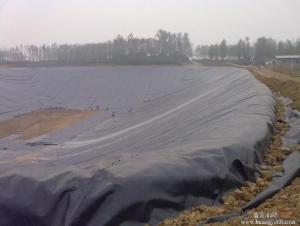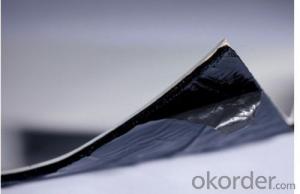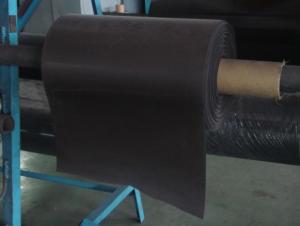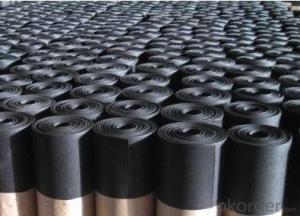EPDM Waterproofing Membrane for Roofing Construction
- Loading Port:
- Shanghai
- Payment Terms:
- TT OR LC
- Min Order Qty:
- 50000 m²
- Supply Capability:
- 5000000 m²/month
OKorder Service Pledge
OKorder Financial Service
You Might Also Like
EPDM Waterproofing Membrane for Roofing Construction
Description Of EPDM Waterproofing Membrane for Roofing Construction:
·Filament polyester filler base sheet material:
·The combination of filament polyester filler base and SBS modified bitumen forms an excellent comprehensive performance and high quality waterproof sheet material;
·High strength waterproof layer and strong water pressure resistance;
·Good performance of breaking resistance, tearing resistance, fatigue resistance, corrosion resistance, mould resistance and weather resistance;
·High tensile strength, high elongation, high adaptive capacity to base shrinkage deformation and fracture;
·Good resistance performance of low and high temperature: It could still work under -20℃ , be applicable to cold and hot regions, especially in chilly region;
·Good workability: It can be constructed by heat fusion method in the four seasons of the whole year and hot-joint is reliable and durable.
·Alkali-free glass fiber filler base sheet material:
·Combination of economical filler base and high performance SBS modified bitumen.
·Higher tensile strength, excellent resistance to high and low temperature.
·Good performance of corrosion resistance, mould resistance, weather resistance and good workability.
·Glass fiber reinforced polyester filler base sheet material:
·It is safe and eco-friendly by using mechanical mounting of construction.
·The product has better dimensional stabiliy.
Main Features of EPDM Waterproofing Membrane for Roofing Construction:
EPDM rubber waterproof membrane can operate in single layer, and is characterized by light weight, ageing resistance, with long service life, great tensile strength and high extension coefficient, which has strong adaptability to shrinkage, cracking and deformation in basic level. It can work well within -40°C to 100 °C and can be constructed with a single layer in ambient temperature. The service life of EPDM rubber waterproof membrane is up to 50 years, which is known as "King of Waterproof".
Specifications of EPDM Waterproofing Membrane for Roofing Construction:
Type | EPDM Rubber Waterproof Membrane | ||
Type | Vulcanized and Weldable | ||
Thickness | 1.2mm | 1.5mm | 2.0mm |
Weight(kg/m2) | 1.54-1.58 | 1.79-1.83 | 2.25-2.29 |
Size | 1.2m (width) * 20m (length)/roll. Weldable type could be 4m wide. | ||
Packing | 24㎡/roll, with plastic bag. (Weldable: 80㎡/roll) | ||
Usage | Roof, basement, pond, Lake, steel structure roofing, underground, tunnel, etc | ||
NO. | Item | Unit | Technical requirement | |
1 | Tolerance on size | Thickness | % | ±10 |
Width | % | ±1 | ||
length | % | Does not allow negative | ||
2 | Fracture tensile strength (normal temperature ) | Mpa | ≥7.5 | |
Fracture tensile strength(60 ℃) | Mpa | ≥2.3 | ||
3 | Breaking elongation,(normal temperature ) | % | ≥450 | |
Breaking elongation,(-20 ℃) | % | ≥200 | ||
4 | Tearing resistance | KN/m | ≥25 | |
5 | Impermeability | * | 0.3Mpa impermeable | |
6 | Bending at low temperature | °C | ≤-40 | |
7 | Elongation and contraction volume at heating | Elongation | mm | ≤2 |
contraction | mm | ≤4 | ||
8 | Hot air aging 80°CX168h | Fracture strength retention | % | ≥80 |
Rate of elongation at break | % | ≥70 | ||
9 | Alkaline (saturated Ca(OH)2 solution normal Temperature x2 168h ) | Fracture strength retention | % | ≥80 |
Rate of elongation at break | % | ≥80 | ||
10 | Ozone aging (40 degree by 168 hours ) | Elongation 40% , 500x10-2 | * | No Crack |
11 | Phytotron aging | Fracture strength retention | % | ≥80 |
Rate of elongation at break | % | ≥70 | ||
Applications of EPDM Waterproofing Membrane for Roofing Construction:
Widely used in roofs, basement, toilet ,swimming pool, and all kinds of industry and civil building waterproofing, reservoir, vivicism, bridge, underground, tunnel and dam waterproofing ,especially to the keystone waterproofing projects which is durability, high corrosion resistance and easy deformation.
Construction Site of EPDM Waterproofing Membrane for Roofing Construction:
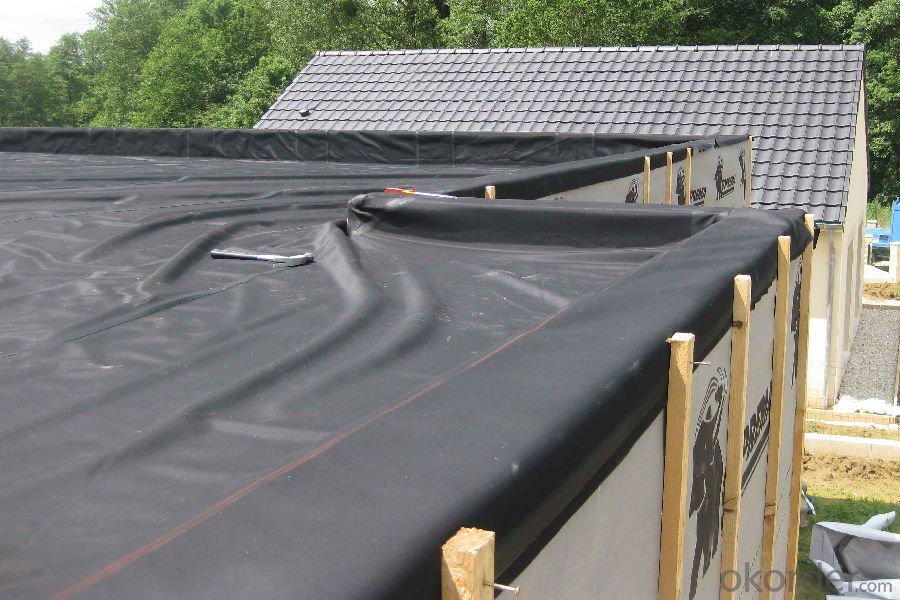
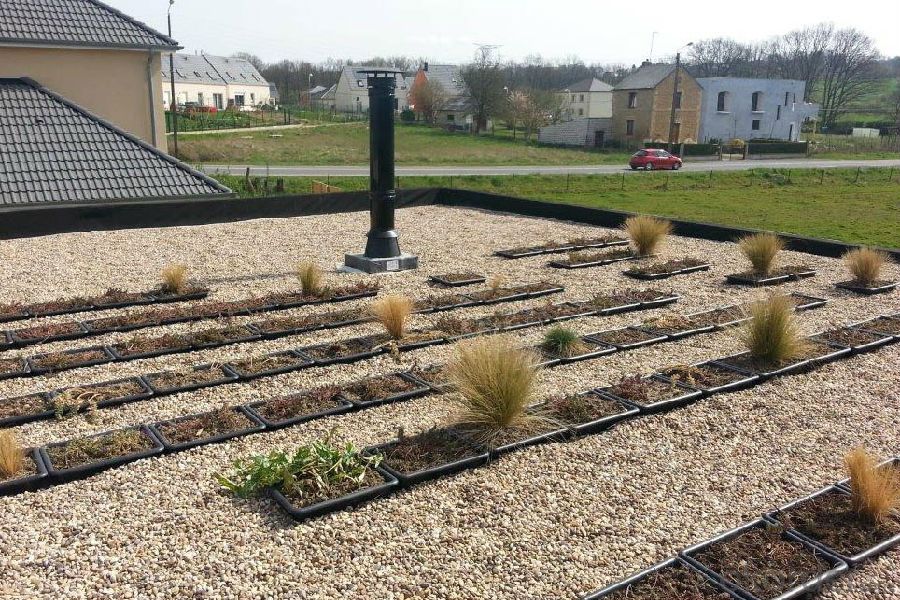
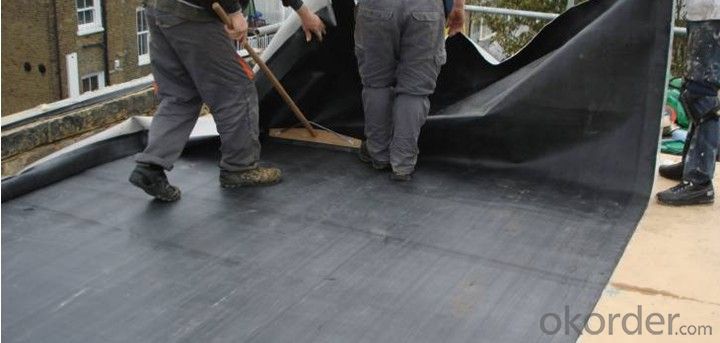
IMages of EPDM Waterproofing Membrane for Roofing Construction:
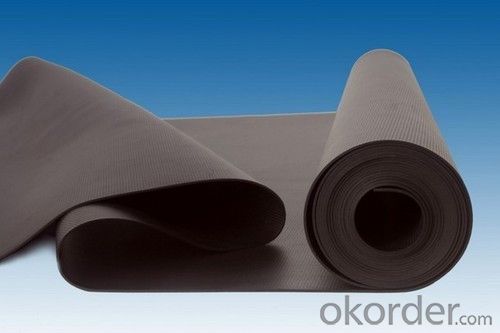
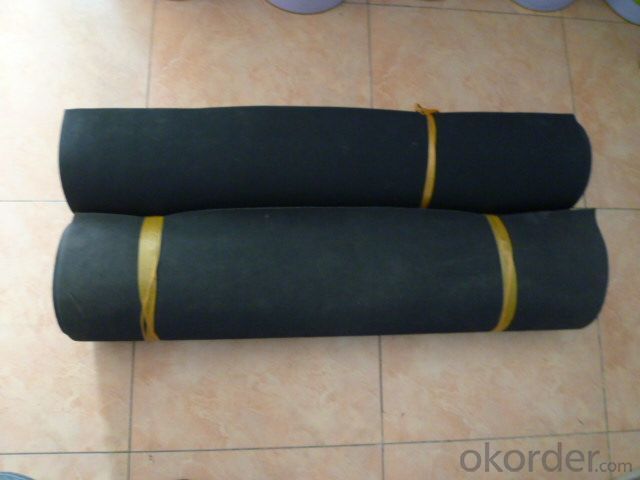
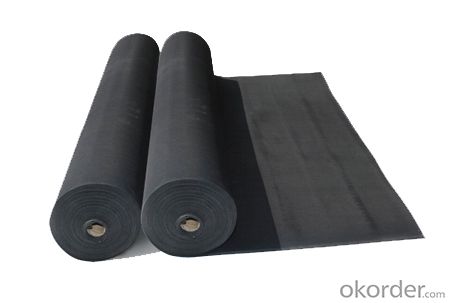
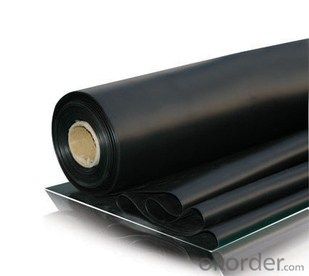
FAQ of EPDM Waterproofing Membrane for Roofing Construction:
1. What are we supplying?
We are specialized in producing Colorful Asphalt Roof Shingle, SBS/APP modified bitumen waterproof membrane, Self adhesive bitumen waterproof membrane, PVC waterproofing membrane, EPDM rubber roofing membrane, Single Component Polyurethane Waterproof Coating, and Spray Polyurea Waterproof Coating
.
2. How Many years experience do we have?
We have been exported to more than 20 countries in the past 15 years.
3. How long do we usually reply your request?
We always reply our customer within 24 hours.
- Q: Can a waterproofing membrane be applied on top of existing waterproofing systems?
- Yes, a waterproofing membrane can be applied on top of existing waterproofing systems. In some cases, there may be a need to add an additional layer of protection or enhance the existing waterproofing system. Applying a new waterproofing membrane on top can provide an extra barrier against water penetration and help extend the lifespan of the waterproofing system. It is important to ensure proper preparation of the existing surface before applying the new membrane to ensure good adhesion and effectiveness. Additionally, consulting with a professional or manufacturer's guidelines can provide specific recommendations for the compatibility and application process of the new waterproofing membrane.
- Q: Can a waterproofing membrane be used on concrete block surfaces?
- Yes, a waterproofing membrane can be used on concrete block surfaces. It is commonly used to prevent water penetration and protect the underlying structure from moisture damage.
- Q: Can a waterproofing membrane be applied on top of existing roofing systems?
- Yes, a waterproofing membrane can be applied on top of existing roofing systems. It provides an additional layer of protection against water infiltration and can help extend the lifespan of the roof. However, it is important to assess the condition of the existing roof and ensure proper installation of the waterproofing membrane to avoid any potential issues or damage.
- Q: Can a waterproofing membrane be used for a basement floor slab?
- Yes, a waterproofing membrane can be used for a basement floor slab. Waterproofing membranes are commonly used to prevent water infiltration and moisture issues in basements, including protecting the floor slab from water seepage. By installing a waterproofing membrane beneath the basement floor slab, it creates a barrier that prevents water from penetrating the concrete and causing damage. This helps keep the basement dry and free from moisture-related problems.
- Q: Can waterproofing membranes be used in wet areas like bathrooms?
- Yes, waterproofing membranes can be used in wet areas like bathrooms. These membranes are specifically designed to create a barrier against moisture and prevent water from seeping into the underlying surfaces. Applying waterproofing membranes in bathrooms is a common practice to protect the structural integrity of the space and prevent any water damage.
- Q: Can a waterproofing membrane be used for parking garages?
- Yes, a waterproofing membrane can be used for parking garages. Waterproofing membranes are commonly used in construction to prevent water infiltration and damage to structures. Given the potential exposure of parking garages to water from rainfall, snowmelt, or vehicle fluids, using a waterproofing membrane can help protect the structural integrity of the garage and extend its lifespan.
- Q: Can a waterproofing membrane be applied in cold weather or during winter months?
- Yes, a waterproofing membrane can be applied in cold weather or during winter months. However, it is important to follow the manufacturer's guidelines and use products specifically designed for cold weather applications. Cold weather may affect the curing time of the membrane, so it is recommended to take necessary precautions and allow sufficient time for proper curing to ensure the effectiveness of the waterproofing.
- Q: Can a waterproofing membrane be used on swimming pool decks?
- Yes, a waterproofing membrane can be used on swimming pool decks. Waterproofing membranes are designed to create a barrier against water penetration, making them ideal for protecting areas exposed to moisture, such as swimming pool decks. These membranes are typically applied to the surface of the deck, forming a seamless and durable waterproof layer. This helps prevent water from seeping into the deck, avoiding potential damage caused by moisture, such as cracking, mold growth, or structural deterioration. Additionally, waterproofing membranes can also provide added benefits, such as increasing the lifespan of the deck and improving its overall appearance.
- Q: Can a waterproofing membrane be used for water treatment plants?
- Indeed, water treatment plants can benefit from the utilization of waterproofing membranes. These specialized membranes are specifically engineered to impede the flow of water, making them an ideal solution for safeguarding against water seepage in diverse structures, including water treatment plants. By applying these membranes to various sections of the facility, such as tanks, reservoirs, pipes, and basements, infiltration of water can be effectively prevented, thus shielding the infrastructure from potential harm. Furthermore, the implementation of waterproofing membranes aids in preserving the integrity of the water treatment process by ensuring that water remains confined within designated areas and does not permeate the surrounding soil or structures.
- Q: Can a waterproofing membrane be used for a stadium roof structure?
- A stadium roof structure can utilize a waterproofing membrane to prevent water damage. This type of membrane acts as a protective layer that stops water from infiltrating the roof. It is typically constructed from water-resistant materials like rubber or synthetic polymers. For stadiums with open-air or retractable roofs, it is crucial to employ a waterproofing membrane to maintain a watertight environment and prevent leaks or water-related issues. This is especially significant because these types of stadiums are exposed to the elements and more vulnerable to water infiltration. A waterproofing membrane can be applied to different types of stadium roof structures, including metal, concrete, or fabric roofs. It is typically installed beneath the roofing material, serving as a protective barrier against water. By preventing water from seeping into the roof, the membrane helps to extend the roof's lifespan and safeguard the stadium's interior from water damage. Furthermore, a waterproofing membrane can offer additional benefits to a stadium roof structure. It can enhance energy efficiency by minimizing heat loss or gain through the roof. Some membranes also provide UV resistance, protecting the roof from harmful ultraviolet rays. In summary, implementing a waterproofing membrane in a stadium roof structure is a practical and efficient solution to ensure the roof remains watertight, durable, and safeguarded from water damage.
Send your message to us
EPDM Waterproofing Membrane for Roofing Construction
- Loading Port:
- Shanghai
- Payment Terms:
- TT OR LC
- Min Order Qty:
- 50000 m²
- Supply Capability:
- 5000000 m²/month
OKorder Service Pledge
OKorder Financial Service
Similar products
Hot products
Hot Searches
Related keywords
